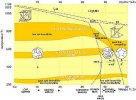I am amazed that traditionally frugal reloaders resist the Burnz-O-Matic and fingers in a dimly lit room. I use a low to medium flame, and hold the neck in the inner blue cone. Just hold the brass between the thumb, index, and middle finger of one hand like a three jaw chuck. Rotate the case back and forth so the flame makes full rotational contact with all of the neck and a bit of the shoulder. I try to emulate Mil-Surp .30-06 brass as far as the finished look. Over the years I have found that 9 smooth, quick rotations, of less than a second each usually achieves the results I am looking for. The little thin necks of .25-20 took more like 7. I do not want to see a red glow except at the most extreme edge of the chamfered case mouth. No glow beneath that. The cases just start to get uncomfortably hot as I drop them and there is a little spit sizzle sound when they hit the water. The annealing colors on the brass are beautiful and when I pinch the case mouth between my thumb nail and index finger later as a test I want to see it flex yet spring back.
I do this in the down stairs bathroom, with only ambient light from the adjacent room, and drop the heated brass into 3" of water in the sink. The water bath does not create the annealing, it stops it and allows me to simply drop the hot to the touch case. When I'm done I drain the water, shake the brass in a plastic collander, and dump it on the old dehydrator I use to dry brass after they are SS pin wet tumbled.
Grab a few Berdan primed junk cases out of your scrap pail and practice the technique until you are comfortable with good brass. I have done brass as long as .40-70 Sharps Straights to as short as .25-20 w.c.f. with perfect satisfaction. I find it a must to protect vintage, irreplaceable brass, and for reforming from one caliber to another. Annealing extends the life of ordinary brass used with cast loads into the realm of nearly indefinite, especially when one learns not to over work the brass also. This is one of the Arts we talk about, but an easily learned one.
Oh, one more thing. As I once read in a BPCR article, never attempt to anneal loaded rounds.



